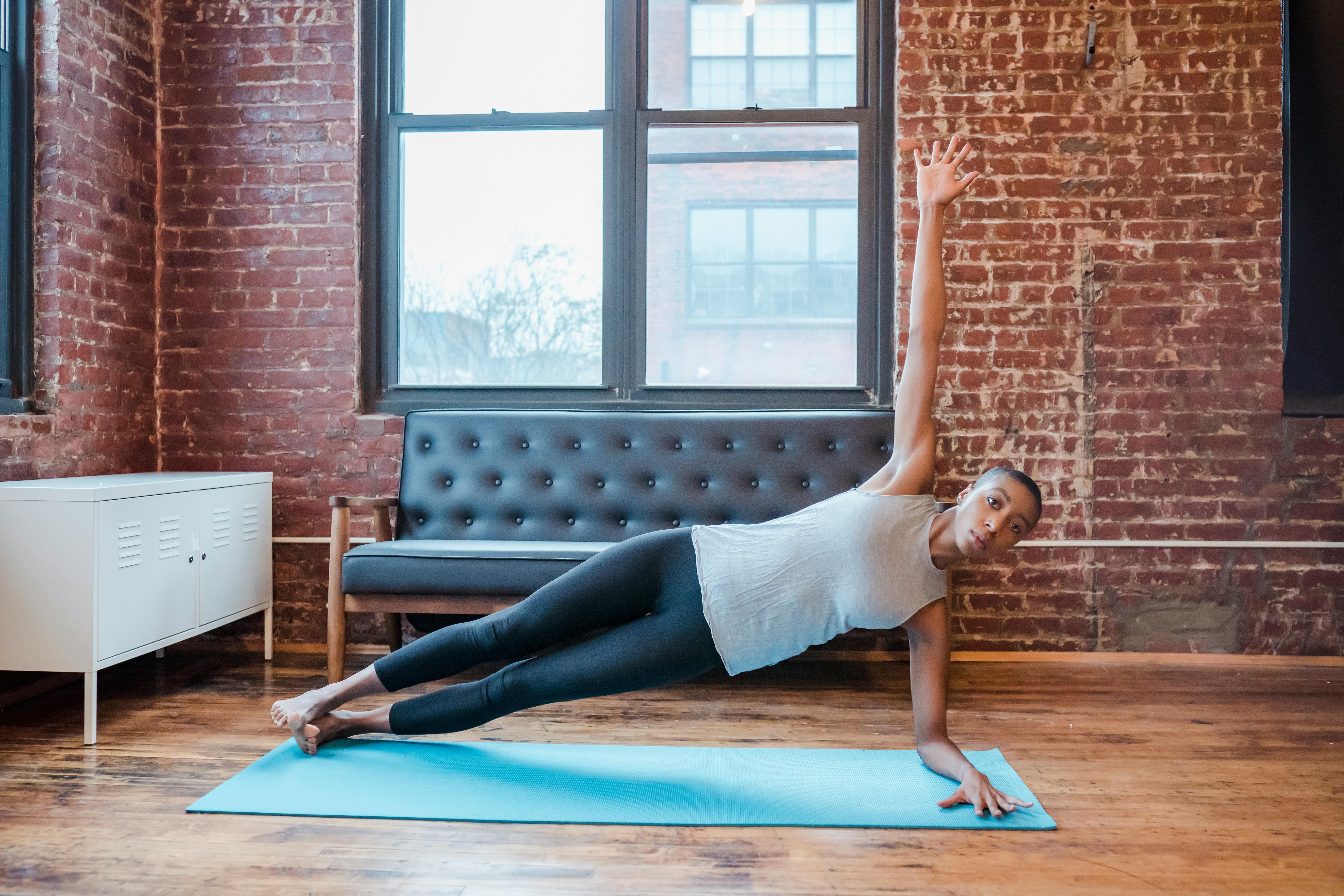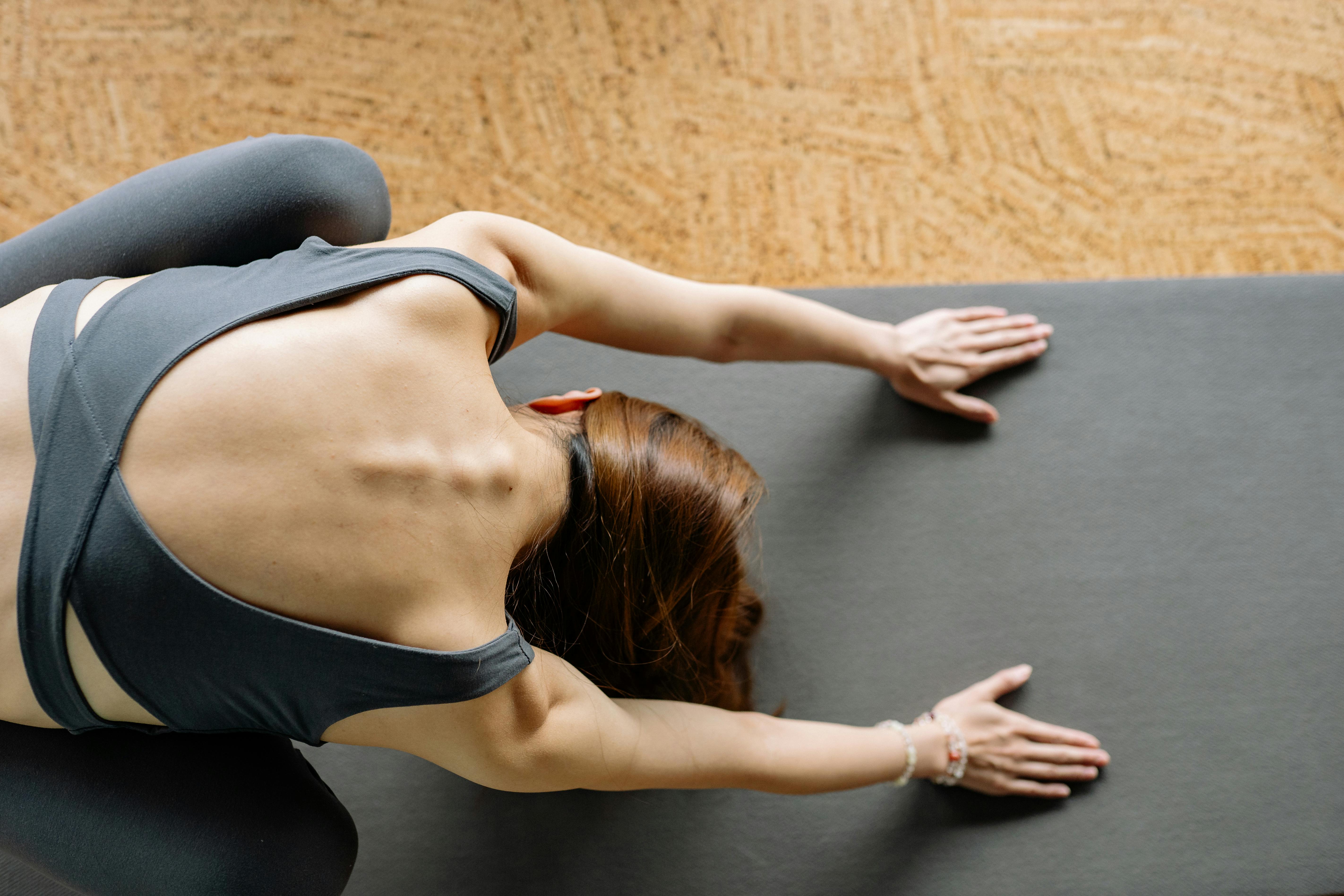Let me get straight to the point: yes and no. The most I can say is – some yoga poses can help some people in some circumstances – which is not a lot, I know. But here’s what it means.
Scoliosis is a medical condition that causes abnormal lateral (sideways) curves in the spine. And, while it can happen to anyone at any age, it’s most commonly diagnosed in children and adolescents. This indicates that several different things can cause scoliosis, which is why doctors classify it as idiopathic (no definite cause), congenital (present at birth), or a result of neuromuscular conditions.
What does this have to do with yoga?
Since different things cause scoliosis because it manifests in such different ways, and as it affects people of all ages, answering this question becomes tricky.
Let me give you an example. For mild cases in healthy, young individuals, there’s plenty of anecdotal evidence and even some scientific studies that confirm yoga’s beneficial effects. Yet, it’s not uncommon to hear horror stories from scoliosis patients who tried yoga and made things worse.
Therefore, if you only have very mild scoliosis with no symptoms, you can do yoga asana! But, if you suffer from more severe scoliosis and want to go to a regular yoga class, don’t! I mean, yoga can help, but you need to be very careful about what poses you perform and when it’s okay to practice them. Always check with your healthcare professional first.
Let’s review the evidence and try to discern the nuances of when and how yoga may help scoliosis (and when it certainly won’t!).

Turning to Science
The best way to make an informed decision on whether yoga can help scoliosis patients is to review scientific findings. However, when we sift through the studies and research out there, it's like opening Pandora's box – a mixed bag of results, but intriguing nonetheless.
Some studies have highlighted the positive effects of certain yoga poses on idiopathic scoliosis in adolescents and adults. For instance, a study on twenty-five patients with idiopathic or degenerative scoliosis published in the journal Global Advances in Integrative Medicine and Health showed that practicing side plank daily for seven months significantly reduced the angle of primary scoliotic curves. Similar results were observed in another study done on adolescent idiopathic scoliosis (AIS) patients. The poses practiced in the second study were side plank, elevated side plank, and half-moon pose.
While the studies were limited in terms of demographics – done on adolescents, adults, and only patients with idiopathic scoliosis – these findings seem promising. After all, participants had a measurable reduction in their scoliotic curves, right?
Yes, but before you roll out your yoga mat, there's a catch. Not all studies arrive at the same conclusions. For instance, a systematic overview of non-surgical treatments for scoliosis concluded that yoga was not an effective treatment. Then again, another meta-analysis on AIS concluded that yoga had indeed the best effect on AIS improvement.
To make things more entangled, for every study that gives yoga a thumbs up, there's a word of caution from healthcare professionals. They remind us that scoliosis is a complex beast. What works for one person might not work for another. And worse, doing the wrong type of yoga or wrong yoga poses without proper supervision can aggravate your symptoms or even worsen your scoliosis.
Unfortunately, from everything we’ve said it becomes clear that the science is inconsistent.
What Does It Mean When the Science Is Inconsistent?
When the science is inconsistent… we need more science.
Thanks to technological advances, in time, we’ll know more. But until then, we should refrain from making any generalizations and be extra careful in these uncertain circumstances.
It’s good to remember that the inconsistency isn't necessarily a mark against yoga or the research itself but rather a reflection of the complexity and individuality of scoliosis as a condition. Some patients shouldn’t do yoga at all, while some can benefit from asanas such as the half-moon pose and side plank. Some poses should never be practiced by patients with scoliosis, such as backbends and twists.
Personalized approaches, under professional supervision and with approval from medical professionals, are safest and will probably give the best results.
Also, listening to your body is crucial. People with scoliosis must become attuned to their bodies' signals, distinguishing between what alleviates discomfort and what exacerbates it. This self-awareness alongside professional guidance can be a good formula for successfully using yoga as a therapeutic tool for scoliosis.

Should You Trust Anecdotal Evidence?
Just yesterday I saw a dear friend’s Instagram story—she is also a yoga instructor—that showed a testimonial from a happy practitioner. Yoga helped her student improve her scoliotic curvature and alleviate symptoms.
Personally, I have also had many conversations with yoga practitioners who swore that yoga helped them realign the spine, correct the abnormal curvature, and strengthen the muscles of the spine.
These stories are heartwarming and can offer hope to many struggling with the discomfort and pain brought on by scoliosis. However, while these anecdotes are valuable and provide insight into the potential benefits of yoga for some individuals, they should be approached with caution when considering them as a basis for treatment decisions.
By no means are these stories fake. Yoga has the power to help some people with scoliosis – note the continued emphasis on some. Factors such as the severity of scoliosis, the presence of other treatments or therapies, the type of yoga practiced, and the individual’s physical condition are all crucial considerations.
Moreover, confirmation bias can play a significant role in how these stories are perceived and shared. People are more likely to report positive experiences and share success stories, while those who did not experience improvement or, worse, experienced exacerbation of their symptoms may remain silent. This confirmation bias can create a skewed perception of the effectiveness of yoga in managing scoliosis, giving undue weight to positive outcomes without a comprehensive understanding of the potential risks and limitations.
So, tread carefully! Here are some of the best practices when practicing yoga with scoliosis.

Best Practices When Practicing Yoga With Scoliosis
By following these practices, you can make sure your practice is safe, effective, and beneficial for your scoliosis symptoms.
1. Consult Your Healthcare Provider
Before beginning any new exercise regimen, including yoga, it's crucial to consult your healthcare provider. This consideration is especially important for individuals with scoliosis because certain movements need to be avoided or modified. Your doctor can provide personalized advice and may also recommend working with a physical therapist or a specialized yoga instructor who’s experienced with scoliosis.
2. Seek Professional Supervision
Practicing yoga under the guidance of a professional instructor who has experience with scoliosis is imperative. The good thing is that most yoga teachers who specialize in scoliosis are also physiotherapists who have had proper training to deal with such situations. These professionals will provide sessions tailored to your specific needs and help you modify some poses to accommodate your curvature, preventing any strain or injury. Moreover, they’ll support you in your journey with sensible advice. Yoga instructors who aren’t familiar with scoliosis may unintentionally instruct asanas that are bad for scoliosis. For instance, even a basic cobra pose can be problematic for some.
3. Tailor Your Practice and Avoid Certain Asanas
To build upon the previous section regarding harmful asanas, it’s important to be well-informed about the types of movements that can exacerbate the condition and worsen scoliosis symptoms. As a rule of thumb, it's advisable to avoid poses that involve backbends, twists, or any movements that exert pressure on the spine. Your health care professional can help identify which poses to avoid and suggest alternatives that support spinal alignment and stability.
4. Focus on Balance
Since scoliosis is the abnormal curvature of the spine to one side, focusing on balance in your yoga practice can be particularly beneficial. Poses that encourage alignment, such as side plank and half moon pose, can help strengthen the spine. They promote stability and may even reduce discomfort. Additionally, your teacher may recommend focusing on one side more to counter the imbalance present in your body.
5. Listen to Your Body
The best skill to have, as someone who suffers from scoliosis, is listening to your body. If a pose feels uncomfortable or causes pain, stop immediately and consult your healthcare provider. Additionally, always be assertive, and don’t hesitate to ask your instructor for modifications.
While yoga can help some push their limits, that should never be the goal of individuals with scoliosis.
6. Prioritize Pranayama and Meditation
Yoga is holistic! While I didn't mention this before, another reason why I can’t say that yoga is bad for patients with scoliosis is that the practice doesn’t need to focus or even involve asanas (physical postures). Pranayama (breathing exercises) and meditation are two elements of yoga that help reduce stress, improve focus, and enhance body awareness, which is vital for managing scoliosis. Both practices are perfectly safe, can improve your quality of life, and promote well-being.
But even beyond these practices, you can practice yoga as a way of being, living, and approaching life. For instance, the Eight Limbs, which range from ethical standards and self-discipline to sensory withdrawal, concentration, and contemplation, provide a practical guideline to bliss and enlightenment. This broader definition of yoga offers a comprehensive approach to living that supports individuals living with scoliosis.
7. Be Patient and Consistent
Progress in yoga, and even more so in scoliosis symptoms, can be slow. So, it requires patience and consistency. Regular practice, even if it's just a few minutes a day, can contribute significantly to improvements over time. So, the key here is to set realistic goals and celebrate small victories.
8. Keep Open Communication
Maintain open communication with your healthcare providers and yoga instructor about your progress and any discomfort or setbacks you may experience. It’s important to be honest and face the challenges that may arise along the way. This collaborative approach ensures that your yoga practice remains aligned with your health goals and that adjustments can be made as needed.

Moving Forward
For many, yoga represents hope for a better and less painful tomorrow. And, as one of the limited non-surgical options for scoliosis patients, there’s added responsibility on all yoga instructors to give their best, yet remain realistic regarding the impact of yoga on scoliosis. Similarly, people with scoliosis need to understand the dangers of practicing yoga on their own.
Very mild scoliosis with no symptoms is likely not a problem, and you can practice any yoga class! However, people with more severe scoliosis should always consult their healthcare provider before trying a new exercise regimen.
Therefore, while yoga can help some patients with scoliosis, the only way to safely move forward is with cautious optimism, the help of healthcare providers, and a very high level of self-awareness.



Comments
Existing Comments